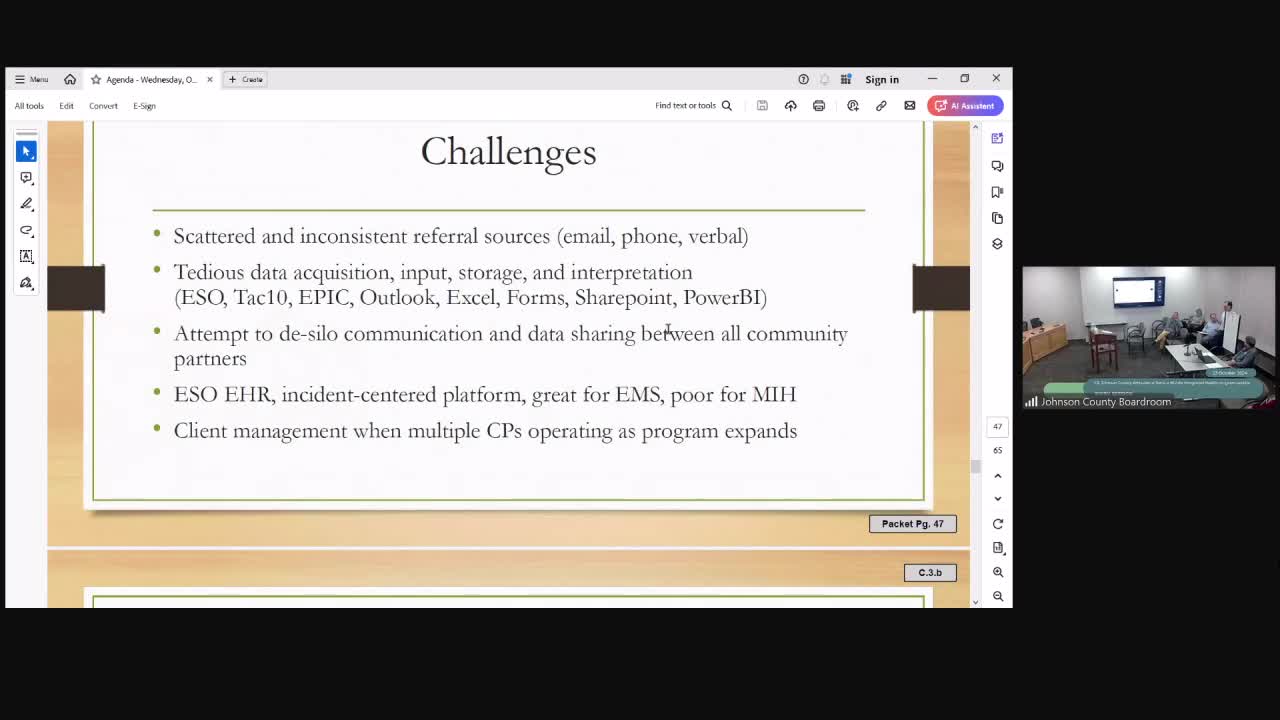Innovative approach transforms emergency health services
October 23, 2024 | Johnson County, Iowa
This article was created by AI summarizing key points discussed. AI makes mistakes, so for full details and context, please refer to the video of the full meeting. Please report any errors so we can fix them. Report an error »

In a recent government meeting, discussions centered around the financial implications and operational efficiencies of the ambulance service budget, which totals approximately $1 million. A key focus was on the impact of a multidisciplinary approach to emergency services, particularly through the work of an individual named Mike, who has been instrumental in improving patient outcomes and resource allocation.
The meeting highlighted the significant costs associated with ambulance services, with advanced life support averaging $1,277 per call and basic life support around $930. However, the actual cost of an ambulance run, factoring in personnel and equipment, is estimated to be between $2,250 and $4,250. This discrepancy raises questions about the sustainability of current funding models.
Mike's interventions have reportedly led to a notable return on investment, with a calculated savings of $4,250 per emergency call diverted due to his proactive engagement with patients. This approach not only alleviates pressure on emergency services but also enhances continuity of care, allowing patients to access necessary resources without resorting to emergency interventions.
Despite the positive outcomes on an individual level, the overall impact on the ambulance service's call volume remains minimal, with less than 1% of calls being diverted. Nevertheless, the meeting underscored the importance of innovative strategies in emergency healthcare, emphasizing the need for software and systems that support ongoing patient management rather than just reactive responses.
The discussions concluded with a call for continued investment in mobile integrated health initiatives, which aim to keep patients engaged in their care and reduce reliance on emergency services. This shift in focus could potentially transform how emergency healthcare is delivered, ensuring better resource utilization and improved patient outcomes.
The meeting highlighted the significant costs associated with ambulance services, with advanced life support averaging $1,277 per call and basic life support around $930. However, the actual cost of an ambulance run, factoring in personnel and equipment, is estimated to be between $2,250 and $4,250. This discrepancy raises questions about the sustainability of current funding models.
Mike's interventions have reportedly led to a notable return on investment, with a calculated savings of $4,250 per emergency call diverted due to his proactive engagement with patients. This approach not only alleviates pressure on emergency services but also enhances continuity of care, allowing patients to access necessary resources without resorting to emergency interventions.
Despite the positive outcomes on an individual level, the overall impact on the ambulance service's call volume remains minimal, with less than 1% of calls being diverted. Nevertheless, the meeting underscored the importance of innovative strategies in emergency healthcare, emphasizing the need for software and systems that support ongoing patient management rather than just reactive responses.
The discussions concluded with a call for continued investment in mobile integrated health initiatives, which aim to keep patients engaged in their care and reduce reliance on emergency services. This shift in focus could potentially transform how emergency healthcare is delivered, ensuring better resource utilization and improved patient outcomes.
View full meeting
This article is based on a recent meeting—watch the full video and explore the complete transcript for deeper insights into the discussion.
View full meeting
